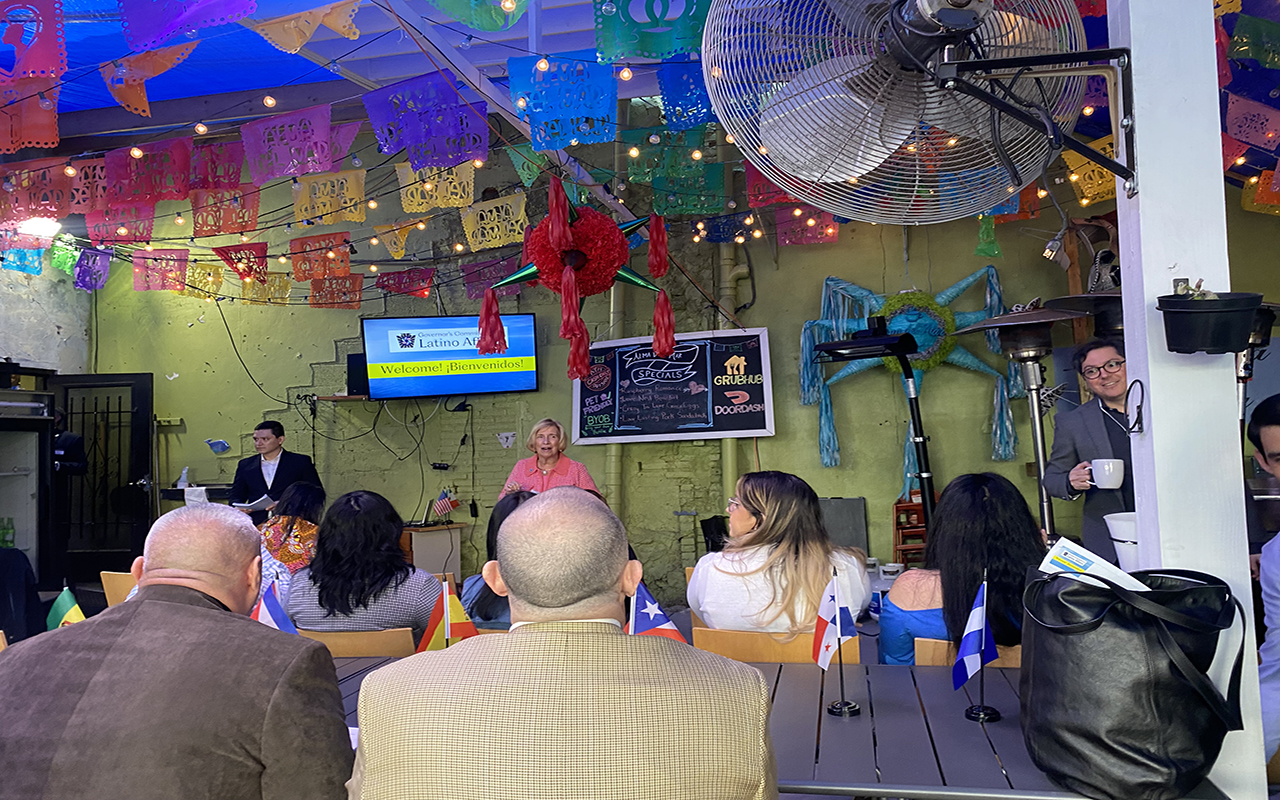
Common Sense? A business culture of diversity
Can diversity be more than a policy of good conscience? Studies have shown that when looked at practically, increasing diversity in the workforce can lead to…
Companies are always looking for ways to innovate. They look for new strategies to continue or improve on what the company already does day in and day out. Some business owners believe that to do this, you have to work smarter not harder.
Take Mario Zacharjasz. He’s one of the founders of PZS Architects in Philadelphia. Zacharjasz has a simple way to keep his company, which has operated for 23 years, open to new and different ways of thinking. A diverse workforce.
“The plus is that different people bring different points of view,” he said. “People are bringing with them their culture. That adds, I think. It makes for a better working place. People learn about other cultures naturally. It’s what you call cross-cultural training in a way.”
Zacharjasz said he has found that the mix of cultures, genders and races adds flavor to the spirit of the office.
“It contributes so much to our creativity and energy level as we create and produce our work,” said Zacharjasz.

How do you define "Diversity?"
To Zacharjasz, seeking a diverse workforce will translate into having a culture of diversity. This philosophy, he said, has been carried through his company’s history. To him diversity is reaching out to communities and networks all over the city to learn about who’s out there.
“Especially in the engineering field, if there’s someone out there that has the skills we need, we’ll take them,” he said. “I’m a firm believer in getting to know all the communities out there. That allows me to identify qualified candidates from a diverse field.”
So how do you find that diverse field? It helps to think about what you are trying to do with your diversity policy, said Inez Lankenau, senior manager of diversity, equity and inclusion at the Children’s Hospital of Philadelphia (CHOP).
“For us, inclusion and diversity are drivers for creating the ideal experience for every patient, family member and employee in a safe, culturally competent, family-centered and caring environment,’” said Lankenau.
In health care, Lankenau explained, companies have to find ways to deal with issues of health care disparity, a concept which she explained is the differences in treatment that are based solely on the patient having a different cultural, racial or ethnic background.
“So why is that important? It’s no surprise that the country’s demographics are changing,” said Lankenau. “And this presents an issue in the areas of health care and business. When the makeup of the population changes, then cultural norms change. And when cultural norms change, health care needs change. And when health care needs change, there is potential for increased health care disparities, cost and potential lives lost.
So she said, CHOP goes beyond what might be considered the “traditional” definition of diversity. The diversity policy at CHOP looks at race, color, ethnicity, gender, age and religion, languages spoken, disabilities, sexual orientation, socio-economic status, gender identity or expression as well as national origin and geographic location.
“Diversity historically has focused on race and gender,” said Lankenau. “Today it is much more than that. Every patient and human interaction is a cross-cultural situation.”

Across the board...
Zacharjasz’ thoughts on the matter aren’t unique. In the business world, workplace diversity has been a topic for some time now. Many of the Fortune 500 companies have developed diversity policies or reports that can be found on their websites.
Google has one, General Motors, Wal-Mart, they all have “diversity” in their corporate scope. Most companies recognized that there are business and cultural benefits to establishing diversity policies and promoting it in their workforce.
And there has been research that backs up this idea of diversity promoting innovation.
A Harvard Business Review study found that companies with, what they called, “2-D diversity,” out-innovated and out-performed those that didn’t exhibit diverse traits. The study looked survey data from 1,800 businesspeople and used interviews that were conducted for that data.
What the study meant when it talked about “2-D diversity” essentially broke down to two different kinds of traits. Those that were “inherited” versus those that were “acquired.” The difference there being “inherited” traits are those that you are born with (i.e., gender, ethnicity and sexual orientation) and “acquired” traits are those you learn (i.e., working with different cultures and different genders).
The researchers found that companies that had both of these traits found themselves 45 percent more likely to report a growth in market share and 70 percent more likely to enter a new market.
They concluded that having this diversity infused in the culture of the company leads to an environment that established a mixed bag of ideas and a culture where “outside the box ideas are heard.”

“Let me give you an example,” said Zacharjasz. “I had a young man working with us from México. He was from Tijuana specifically. This young man brought with him great architectural ideas from the area where he grew up. Those ideas lent themselves to designs. It was very interesting because his point of view came from a different angle that most of us were used to. So we sat down, we discussed it and if it applies to the project we’re working on then wonderful.”
Luis Mora, president and founder of Finanta, a community microlender in Philadelphia, said this concept is not something that is questioned. It has been a part of his company’s culture since it’s inception.
“Of course, each person brings a different perspective from her or his own culture, background, experience, and education,” he said. “This makes our collective work much more creative, innovative, and rich, as well as, our capacity to serve all customers in a more understanding and sensitive manner.”
Mora said Finanta needs to have a diverse workforce in order to do the work they want to do in the community. To be able to address the financial needs of the community, they must be able to communicate accurately with all kinds of people, both in literal terms and cultural terms.
“Because of our diversity, we are able to meet the customers where they need,” said Mora. We understand where they come from, their culture and their needs. Also, in some instances we are able to communicate in the same language.”
...but not quite on the board.
Interestingly enough, diversity efforts seem to be successful up until you get to the “c-suite.” That is to say, companies still struggle to break diversity barriers at the executive levels.
For the most part, companies do not look beyond the usual suspects when trying to fill a board seat. As an example, AL DÍA published a report last year on Latinos on boards. The study found that out of 1,143 seats available on the top 40 boards in the city, only 24 were occupied by Latinos. The number nationally is 3 percent even though Latinos represent 16.7 percent of the U.S. population.
A study by Black Enterprise magazine found out of a pool of the 250 largest companies, 74 of them had no African-Americans on their boards.
The number of women on boards has been increasing. According to 2020 Women on Boards, a national campaign that is set on helping increase the amount of women on corporate boards, the percentage of women on boards has gone up over the last four years.
When looking at the Fortune 500 companies, the percentage of women on boards has climbed to around 20 percent in 2015, up from 16.4 percent, according to the organization’s findings.
The issue still remains, however, that the path to the c-suite is not easy for diverse ethnic groups.
“The first step is to acknowledge the issue,” said Lankenau. “At CHOP, our CEO has included promoting a culture of respect, including diversity and inclusivity in the workplace, as part of her leadership platform. She sees diversity and inclusion as a strategic priority for us.”
So the issue is there. It’s acknowledged. What do you do then to solve it. Lankenau said it isn’t enough to just look for the diverse c-suite candidates.
“Building a diverse workforce is more than just hiring a diverse individual for a certain job,” she said. The individual also has to be successful in their new role and have opportunities to grow in the organization. Both the individual and the organizational system play a role in that.”

De izquerda a derecha: Kersy Azovar, Patrick Daher, Erika Tapp, Stella Standifer, Sameer Khetan, Heather Hanowitz, Michael Alles, Pitou Chen y Matthew Hinton. Foto: Finanta
So what’s the next step?
It comes down to culture and it comes down to leadership. A Forbes Insight survey of 300 corporate executives found that 35 percent believe the CEO is accountable for the success of diversity and inclusion programs.
So a change in thinking first has to come from the top down.
“[Companies] need to make a conscientious decision and diversify,” said Mora. “ Also, they need to prepare the existing staff to be receptive to the diversity of others, and vice versa. When we hire we need to clearly state the nature of the staff, so that people are aware of the culture they are going to be part of. Some people like diversity, some don’t and we need to be respectful of that.”
First and foremost, the problem has to be called out, said Lankenau. Once you can call it out, you can take a look at what needs to get done.
“In our case, we have a program focused on developing and promoting underrepresented groups where participants benefit from formal mentoring, coaching, experiential learning opportunities and formal education experiences. We track the progress of those efforts,” she said.
In the end, the way diversity has to be framed for companies to pay attention, Lankenau said, is in terms of dollars and cents.
In business, diversity and inclusion are important because of global economic competition. A diverse and inclusive workplace contributes to a health workforce. A healthy workforce is a productive workforce. A productive workforce can contribute to decreased health care costs and decreased lawsuits.











LEAVE A COMMENT:
Join the discussion! Leave a comment.